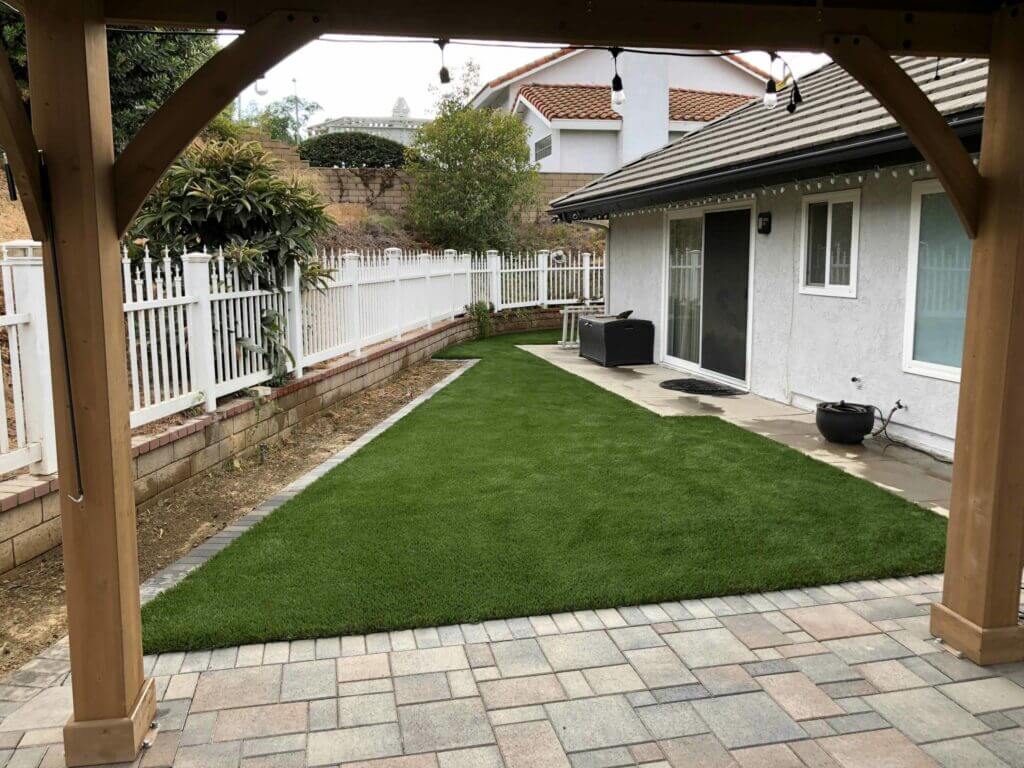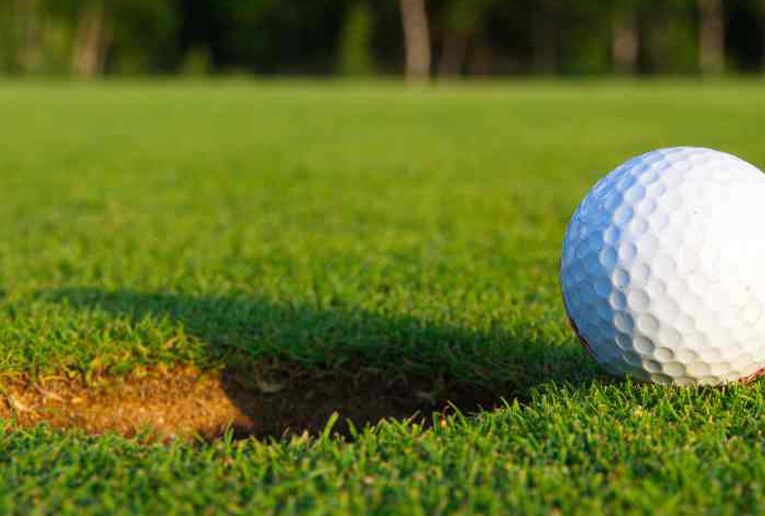Are you tired of spending hours maintaining your lawn? Are you looking for a way to make your yard look beautiful without the hassle of watering, mowing, and fertilizing? If so, synthetic grass may be the perfect solution for you. Synthetic grass, also known as artificial turf, is a low-maintenance, eco-friendly alternative to natural grass. It can be used for various applications, including residential lawns, commercial landscaping, sports fields, and playgrounds. In this blog post, we will explore the benefits of synthetic grass and how it can help you create a beautiful, sustainable yard. So, if you’re ready to say goodbye to lawn maintenance and hello to a lush, green yard, read on!
What Is Synthetic Grass?
Synthetic grass is a low-maintenance, eco-friendly alternative to natural grass. It’s made from various materials, including rubber and plastic, that are environmentally friendly. These materials provide the look and feel of grass without water, fertilizers, or pesticides. Synthetic turf also lasts for years without needing replacement. Its durability makes it an ideal option for playgrounds and sports fields.
The Environmental Advantages of Synthetic Grass
Synthetic grass is a low-maintenance alternative to natural grass. It is eco-friendly due to its water, fertilizer usage, and disposal. Unlike natural grass, synthetic grass does not require fertilization or watering. This means it can be installed in any weather condition, making it a popular choice for areas with high foot traffic. Here are some environmental benefits:
Reduced water consumption and conservation
Synthetic grass is a popular artificial turf replacement for turf grass due to its low maintenance and sustainability benefits. Synthetic grass is made from synthetic materials that mimic natural grass’s look, feel, and performance. This makes it an ideal replacement for lawns that require a lot of water.
Synthetic turf requires no watering, which can significantly reduce water usage in areas where water is scarce. By replacing turf grass with synthetic turf, you can save up to 50% of the water used on a traditional lawn.
Reduced use of fertilizers and pesticides
The use of synthetic grass eliminates the need for fertilizers and pesticides, offering environmental advantages that can help to improve overall air quality. Synthetic grass does not require the use of fertilizers, which can contain harmful chemicals, such as nitrogen and phosphorus, that can be washed away by rain and runoff into nearby rivers, lakes, and streams, resulting in excess nutrients in the water that can lead to algal blooms and other water-related problems. Additionally, when synthetic grass is installed, there is no need to use pesticides, which can have negative impacts on the environment, such as harming beneficial insects and animals, contaminating the soil and water, and impacting the health of humans.
Reduced carbon footprint
The use of synthetic turf results in a lower carbon footprint than the use of turf grass, as artificial turf does not require the need for fertilizer, water, or pesticides. When synthetic turf is replaced with natural grass, it can increase CO2 levels in the atmosphere. Carbon dioxide is a greenhouse gas that traps heat, contributing to climate change and global warming. If it is replaced with synthetic turf, the carbon footprint of the installation will be significantly lower, which can help to reduce CO2 levels in the atmosphere and mitigate climate change.
Increased biodiversity
Synthetic grass can contribute to increased biodiversity in several ways. Firstly, synthetic grass is designed to replicate natural grass and provides a habitat for wildlife. This includes beneficial insects such as pollinators, which can help increase the diversity of the local environment, birds, and small mammals. The artificial turf also offers a safe space for these creatures to live and breed, providing a refuge from natural predators. Another way in which synthetic grass can contribute to increased biodiversity is through the use of organic fertilizers and pesticides. Synthetic grass is not treated with harmful chemicals, so the soil and air are free from toxins.

The Maintenance Advantages of Synthetic Grass
Synthetic grass is an increasingly popular alternative to natural grass for landscaping, sports fields, and playgrounds. Synthetic grass is made from a blend of polyethylene, polypropylene, and nylon fibers manufactured to look and feel like natural grass. Unlike natural grass, synthetic grass requires little maintenance, offers a consistent look and feel, and is eco-friendly. Here are some maintenance advantages of synthetic grass:
Reduced mowing and maintenance costs
The use of synthetic grass can result in significant cost savings when it comes to mowing and maintenance. With synthetic grass, there is no need to mow, water, fertilize, or treat the lawn with pesticides. The lawn can also be left to its own devices with minimal maintenance, reducing the time and cost associated with lawn care. Additionally, synthetic grass is more durable and resistant to wear and tear than natural grass, which means it will last longer, requiring less maintenance and fewer replacement costs. All in all, synthetic grass can result in reduced mowing and maintenance costs, making it a smart money-saving option for any homeowner.
No need for irrigation or fertilization
Synthetic grass is a low-maintenance alternative to natural grass that doesn’t require irrigation or fertilization. It is made from artificial material and can be installed on any surface, including pavement, decks, and patios. It is also environmentally friendly as it is made from recycled materials and is biodegradable. If you are looking for a lawn option that is durable and environmentally friendly, synthetic grass could be a good choice. It lasts longer than natural grass and has fewer maintenance requirements. It can be used in areas where space or cost constraints make installing natural grass difficult.
No need for reseeding or aeration
Synthetic grass is a low-maintenance alternative to natural grass that doesn’t require reseeding or aeration. Instead, it is made of synthetic fibers that can be laid in patterns similar to natural grass. This grass is environmentally friendly as it requires no chemical pesticides or fertilizers. It can be used indoors and outdoors and comes in various colors and styles to suit your outdoor space. Synthetic grass is a popular choice for areas where water restrictions are in place. It helps save valuable resources while providing an attractive and comfortable surface for outdoor entertaining. This artificial grass is also ideal for use near pools, playgrounds, patios, and other areas where mossy or overgrown grasses usually thrive.
No need for weed control
Synthetic grass is a low-maintenance alternative to natural grass that is eco-friendly and doesn’t require weed control. The synthetic grass can be easily cleaned with a hose, making it suitable for outdoor use. It is also resistant to wear and tear, which makes it an ideal choice for outdoor applications. Since synthetic grass is durable and does not require special care or attention, it can easily be incorporated into any landscaping scheme. Overall, synthetic grass offers numerous benefits for residential and commercial applications, making it an excellent choice for landscaping projects.
The Aesthetics of Synthetic Grass
Synthetic grass has become an increasingly popular option for homeowners looking for an attractive, low-maintenance lawn. Its aesthetic appeal often drives homeowners to choose synthetic grass over traditional grass varieties. Synthetic grass typically has a lush, natural look that can be customized to fit any landscape design. From lush green to various colors, homeowners can choose from a wide range of options to create the perfect lawn for their needs.
A variety of textures and colors are available
The aesthetics of synthetic grass offer a variety of colors and textures. Some colors available include olive green, field green, emerald green, and lime green. Textures available range from natural grass to a more realistic, high-end look. Synthetic grass also comes in various colors, including brown, gray, and tan. The different colors of synthetic grass can create a unique look for any area. Many synthetic grass products also come with various infill options, such as rubber, sand, and pea gravel, which can add a different texture and look to the area. Additionally, some synthetic grass products have a UV coating which helps to protect against fading and discoloration from the sun.
Can be used in a variety of settings
Synthetic grass is a low-maintenance alternative to natural grass that can be used in various settings, including commercial properties, sports fields, and residential gardens. It is environmentally friendly because it requires no water or fertilizer to grow. Some synthetic grasses are fire retardants, reducing the risk of accidental fires. Additionally, synthetic grass can last for years without requiring maintenance. It can be easily maintained with cold-pump spray or grass broom cleaning. The artificial turf has a unique aesthetic appeal and can add value to any outdoor space. Synthetic grass offers many benefits to homeowners and businesses, whether used as an aesthetic addition or as a sustainable alternative to natural grass.
Can be designed to mimic the look of natural grass
Synthetic grass is a low-maintenance alternative to natural grass that can be designed to mimic the look of traditional turf. Synthetic grass is made up of small pieces of plastic that are bonded together and then compressed. This makes it a durable and long-lasting product that doesn’t require frequent maintenance. It can be used for various applications, including sports fields, playgrounds, and homes. Artificial grass is a cost-effective option that can help reduce the maintenance costs associated with traditional turf grass. In addition to its aesthetic benefits, synthetic grass also improves the quality of outdoor spaces and reduces the risk of injuries in various sports activities.

Conclusion
As you can see, synthetic grass has a lot to offer landscapers, homeowners, and landscaping enthusiasts. Besides offering an eco-friendly alternative to natural grass and providing a variety of benefits for the environment, synthetic grass is also durable, affordable, and easy to maintain. If you’re looking for a low-maintenance alternative to grass lawns that will boost the value of your home while creating a more aesthetically pleasing landscape and outdoor space, synthetic grass at Ruff N Tuff Turf in Irvine, CA, is a perfect choice. Give us a call today at (949) 989-6878 to discuss your landscaping needs!
The post Synthetic Grass: A Low-Maintenance, Eco-Friendly Alternative to Natural Grass appeared first on Ruff n Tuff Turf.

